If you are wondering what causes high ammonia levels in a fish tank, then you are in the right place.
In this article, I am going to answer the same question.
In a new fish tank, a lack of beneficial bacteria causes high ammonia levels. Overfeeding, overcrowding, poor tank maintenance, and organic decay of aquarium plant parts all contribute to a high ammonia level in a well-established tank.
Keep reading the article to find more details on what causes high ammonia levels in the fish tank and what you can do to get rid of it from your fish tank.
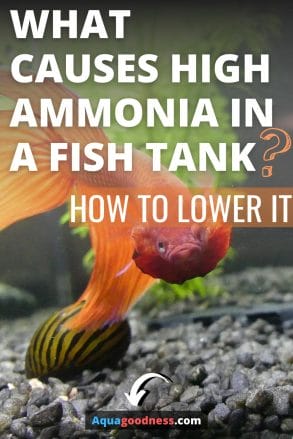
Table of Contents
6 Causes of High Ammonia in a Fish Tank
The most common causes of high ammonia levels in a fish tank are listed below.
I’ve also discussed how to reduce and eliminate ammonia for each cause.
1. Lack of Beneficial Bacteria in the Aquarium
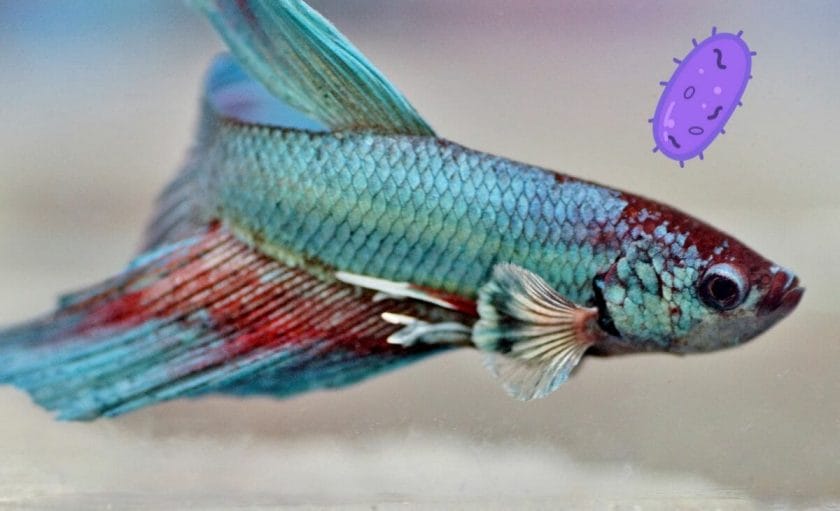
If you have set up a new fish tank and you see ammonia spikes in your aquarium, then the most common reason behind these could be a lack of beneficial bacteria.
Beneficial bacteria are the bacteria that basically convert ammonia into nitrites and then into less harmful nitrates.
If you have a new fish tank and it is not properly cycled, then your fish tank will not have a sufficient amount of beneficial bacteria to cope with the ammonia, i.e., convert toxic ammonia into less harmful nitrates.
So in this case, you will need to cycle your fish tank properly so that it will have sufficient colonies of beneficial bacteria that will convert harmful ammonia into nitrates.
If you are not sure what cycling means, then please read this article.
Besides, read this article to learn the fastest ways to cycle your fish tank.
2. Organic Die Off
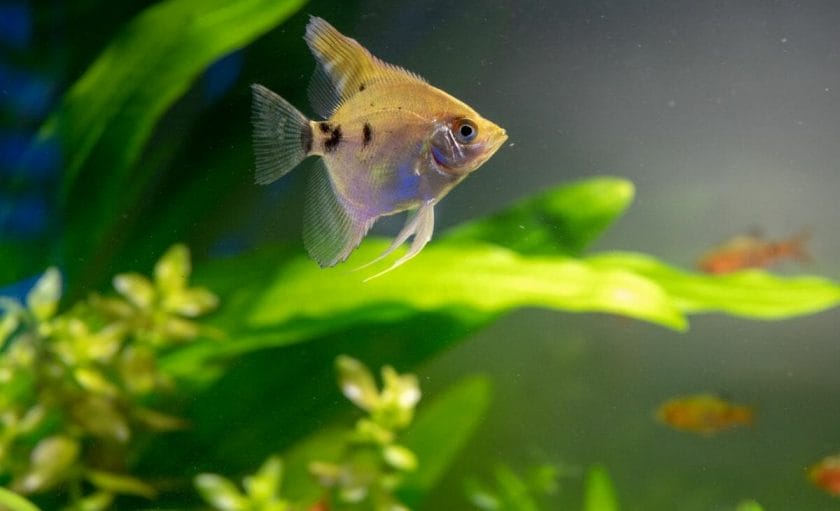
If you have live aquarium plants in your fish tank, the decomposition of the plant’s leaves and the entire plant produces ammonia.
That’s why it is important to regularly remove any dead leaves or plants from your fish tank to avoid ammonia.
3. Overfeeding Your Fish
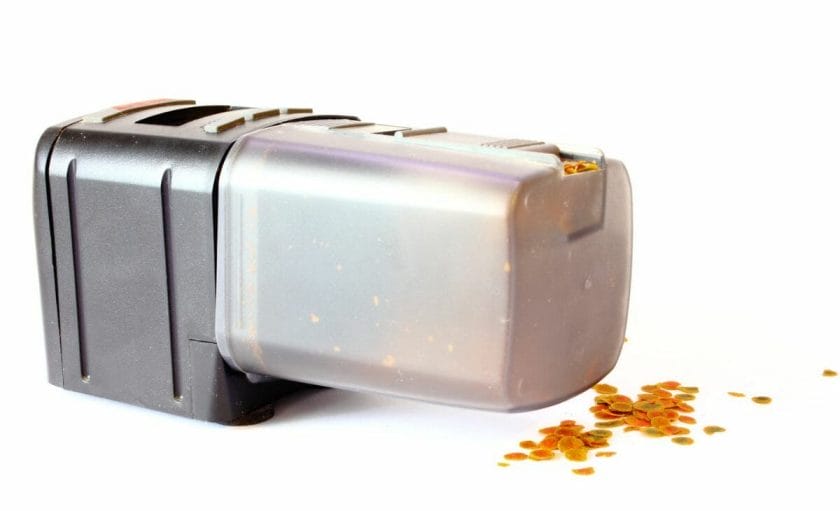
Overfeeding fish is a very common mistake that beginners make.
And overfeeding your fish can result in high ammonia levels in your fish tank.
When you put a lot of food fish food in your aquarium the fish will either consume a lot more than what is necessary for them. Or the uneaten fish food will drop to the bottom of the fish tank or float on the surface of the water of your fish tank.
Either way can contribute to ammonia in your fish tank.
If the fish ate more than necessary then it will also produce a lot of waste in your fish tank.
And this waste will decompose and produce ammonia in your fish tank.
The uneaten food that drops to the bottom of the fish tank or floats on the surface of your aquarium water will eventually break down and decompose and produce ammonia in your fish tank.
In this case, to control the ammonia levels in your fish tank, you should not overfeed your aquarium fish.
A good rule of thumb to follow when it comes to feeding your aquarium fish is you should feed the amount of food your fish can consume within 2 minutes.
And after feeding your fish, after 5 to 10 minutes, you should remove any uneaten food from your fish tank.
4. Overcrowding Your Fish Tank
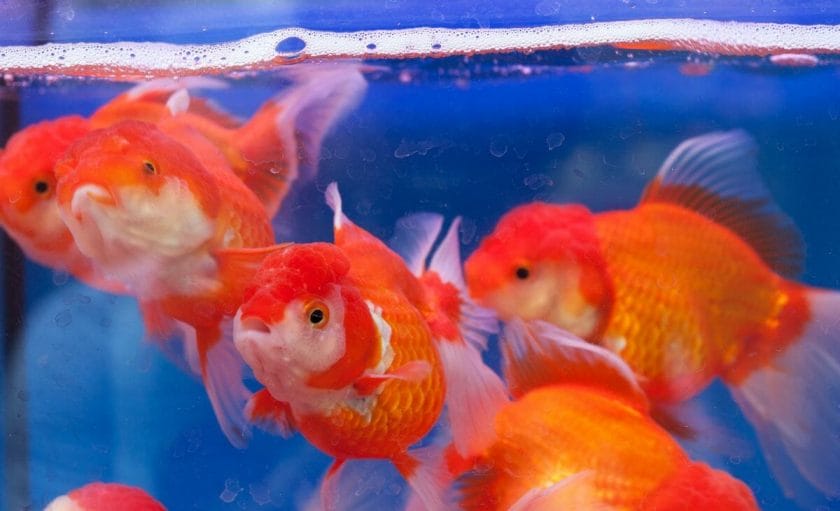
Overcrowding fish tank is another mistake that many beginners make when they are just starting out in the aquarium hobby.
It is very exciting to add new fish to the tank. But beginners forget that the fish have their own requirements, and you can add only so many fish depending on the size of the fish tank.
For example, if you want to keep just one Betta fish in your fish tank then a five-gallon tank is sufficient for a Betta fish.
However, if you want to keep a Goldfish in a fish tank, as Goldfish can grow pretty large, you will need at least a 20 to 30 gallon tank to keep a single Goldfish.
When you overcrowd your fish tank or put more fish in a relatively smaller tank, the fish waste produced by all the fish in the tank will rapidly increase the ammonia levels in your fish tank.
That’s why it is very important to research the tank requirements of any fish you want to keep and keep them in the appropriate fish tank size.
When it comes to deciding on the fish tank size for your fish, 1 gallon per inch of the fish is a good rule of thumb to follow.
5. Poor Fish Tank Maintenance

Poor fish tank maintenance contributes to high ammonia levels in your fish tank.
To keep your fish tank clean, you will need to regularly do maintenance of it.
This means that you will need to do a partial cleaning of your fish tank on a weekly or biweekly basis.
Additionally, you will also need to do a thorough cleaning of your tank on a monthly basis.
In this article, I have mentioned the things that you need to do on a weekly or bi-weekly basis. And what you’ll have to do on a monthly basis to keep your fish tank clean.
It is a detailed article with step-by-step instructions on how you should do the maintenance of your fish tank, so please check it out.
6. Your Tap Water May Introduce Ammonia in Your Fish Tank
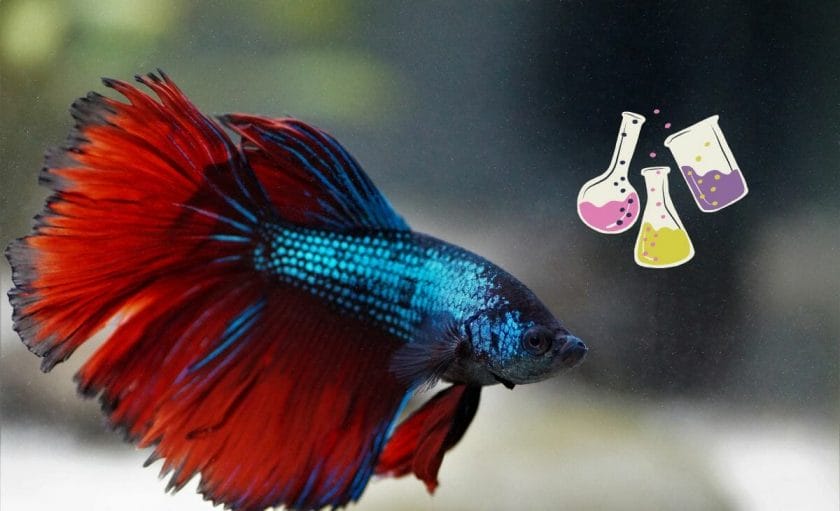
In many cities, chloramine (NH2Cl) is used to disinfect the tap water.
When you use such water in your fish tank and add dechlorinator to the water, the chlorine (Cl) will get out of the water but ammonia (NH3) will be left behind.
Now the ammonia left behind will not be a lot; it will generally be around 0.5 PPM, which will get converted into nitrite and nitrate if your fish tank is properly cycled and has sufficient beneficial bacteria to convert the ammonia into nitrite and then into nitrate.
In this situation, to get rid of ammonia from your fish tank, you will need to properly cycle your fish tank.
In this article, I have mentioned the fastest ways to cycle your fish tank so check it out.
How Do I Lower Ammonia Levels in My Aquarium?
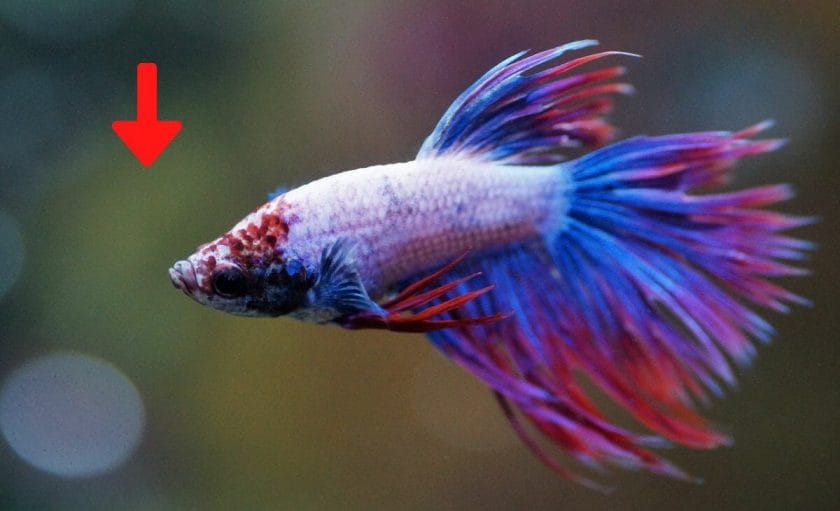
There are several ways to lower the ammonia level in your fish tank.
1. Cycle Your Tank
If you have set up a new fish tank and you have not cycled it properly, then the best way to permanently get rid of ammonia from your fish tank is to cycle your fish tank.
I have covered different ways to cycle your fish tank in this article.
2. Do a Partial Water Change
A partial water change of about 30 to 50% of the water in your fish tank will dilute the ammonia in your fish tank.
3. Keep Live Aquarium Plants
If you don’t have any live aquarium plants or if you have very few live aquarium plants in your tank then adding some live aquarium plants can help to lower the ammonia in your fish tank.
The live plants will absorb ammonia from the aquarium water and use it as food to grow.
4. Upgrade to a Bigger Tank
If you have a lot of fish in your aquarium, then upgrading to a bigger tank can help to lower the ammonia levels.
Besides these ways, there are several other ways to lower ammonia in your fish tank.
I have written a detailed article covering all the ways in detail in this article.
How to Test Your Aquarium Water for Ammonia

Ammonia is deadly for your fish. That’s why keeping track of ammonia and making sure that your fish tank doesn’t contain any ammonia is critical.
To measure the ammonia level in your fish tank, you can use an aquarium water test kit.
There are two types of test kits available to measure the ammonia level in your fish tank
- Test strips
- Liquid-based test kit
Test strips are helpful to know if the water parameters of your aquarium water are out of whack.
However, they are not very accurate.
To get an accurate reading of the ammonia levels in your fish tank, you should use a liquid-based aquarium water test kit.
I recommend the API Master Test Kit; it is a liquid-based test kit and it is very accurate.
It is a bit expensive. However, you can perform a lot of tests using the kit, so in the long run, it is worth it.
How to Use API Master Test Kit to Test Ammonia in Your Aquarium Water
- First of all, you will need to fill the test tube that comes with the kit up to the 5 ml mark.
- Now API master test kit comes with 2 water-testing solutions.
- So first of all you will need to add 8 drops of the first bottle into the test tube.
- Then you will need to add 8 drops of the second solution into the test tube.
- Once the drops are added then you will need to cap the test tube and shake the test tube vigorously for about 30 seconds.
- Now you will need to wait for about 5 minutes and after 5 minutes you should see the color of the water in the test tube start to change.
- So after 5 minutes, you should hold the test tube against the ammonia color card to know how much ammonia you have in your aquarium water.
FAQ
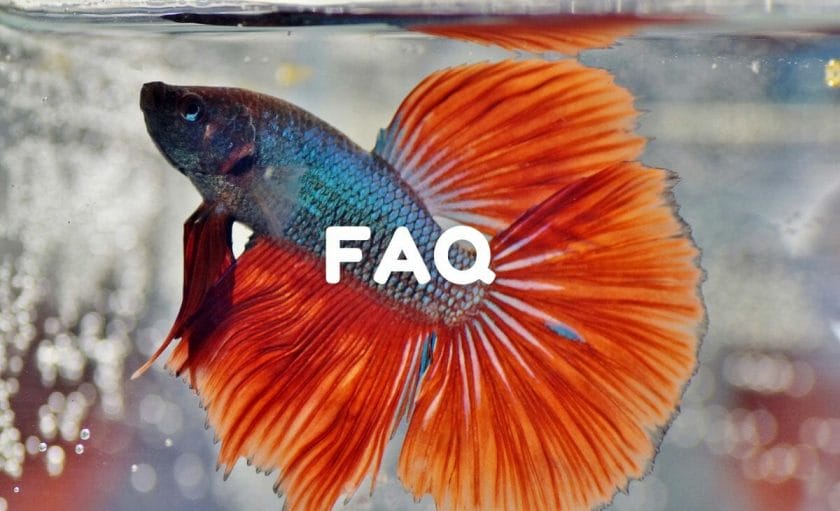
Can fish recover from high ammonia levels?
Fish can recover from high ammonia levels if you catch the high ammonia levels in your fish tank early and treat your fish immediately.
It can take anywhere from 3 to 5 days for the fish to respond to the treatment.
How long does it take for ammonia levels to go down in fish tank?
During the cycling process, it can take anywhere from 4 to 6 weeks for ammonia levels in the fish tank to go down.
Does water conditioner remove ammonia?
Water conditioners don’t remove ammonia from your fish tank directly. Instead, it just converts the free ammonia into ammonium, which is not toxic for your fish. However, the ammonia still remains in your aquarium’s water.
Conclusion
There could be several reasons that cause high ammonia levels in your fish tank.
In new fish tank setups, not cycling the tank properly is a very common reason for high ammonia levels.
In established fish tanks, overcrowding, overfeeding, and not doing proper maintenance of the fish tank properly causes high ammonia levels.
I hope the tips I have mentioned in the article will help you to lower and get rid of ammonia in your fish tank.
Happy fishkeeping!
Sources: